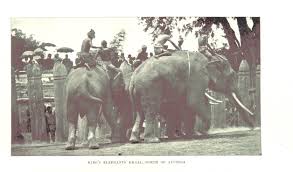
Introduction
The term ‘Siam’ holds historical importance in the context of Thailand, representing the kingdom that shaped much of the Southeast Asia we know today. The name ‘Siam’ was officially used until 1939 when it was changed to Thailand. Understanding the significance of Siam is essential as it provides insight into the cultural, political, and economic developments that have influenced present-day Thailand.
The Historical Significance of Siam
Siam, with a history dating back to the 13th century, was characterized by various periods of prosperity and conflict. The kingdom reached its zenith under the Ayutthaya Kingdom (1351–1767) when it became a major trading hub in Southeast Asia, attracting merchants from China, Europe, and India. Its rich culture manifested in architecture, arts, and the emergence of Thai literature.
Key events significantly impacted the growth of Siam, including foreign invasions, the eventual collapse of the Ayutthaya Kingdom, and the establishment of the Rattanakosin Kingdom in 1782, which founded Bangkok as the capital. The modernizations initiated during the reign of King Chulalongkorn (Rama V) in the late 19th and early 20th centuries laid the foundations of the contemporary Thai state.
Siam in the Modern Context
In contemporary times, the legacy of Siam continues to be felt in various aspects of Thai culture and society. Festivals like Songkran and Loy Krathong trace their roots to ancient Siamese traditions. Moreover, traditional Thai cuisine, art forms, and Buddhist practices all emanate from this rich historical background.
Additionally, Siam is significant in the context of geopolitical discussions. It represents a bridge between Western influences and traditional Eastern cultures, a narrative that contributes to Thailand’s identity on the global stage. Its historical navigation of colonial pressures in the 19th century serves as an important case study for emerging nations in maintaining sovereignty amidst external pressures.
Conclusion
The exploration of Siam reveals more than just a historical kingdom; it provides valuable lessons about resilience, adaptation, and cultural continuity. Understanding Siam’s complex history fosters a deeper appreciation for Thailand’s present and future. As the world increasingly looks to Asia for influence in various realms—be it economy, culture, or diplomacy—recollecting the stories from Siam becomes crucial. As we move forward, it is essential to preserve and honor this legacy to ensure that the paths of history continue to enrich current and future generations.



